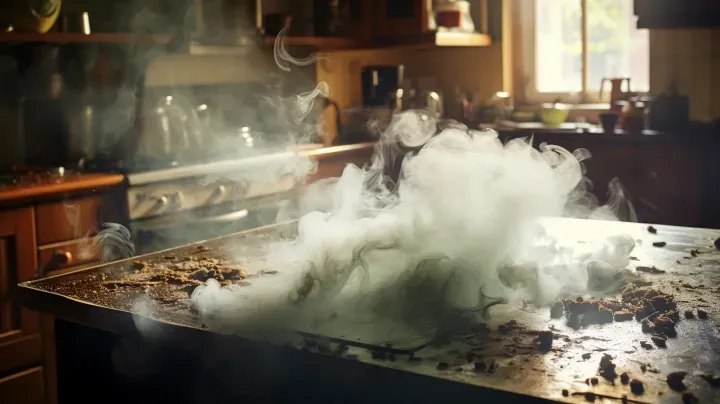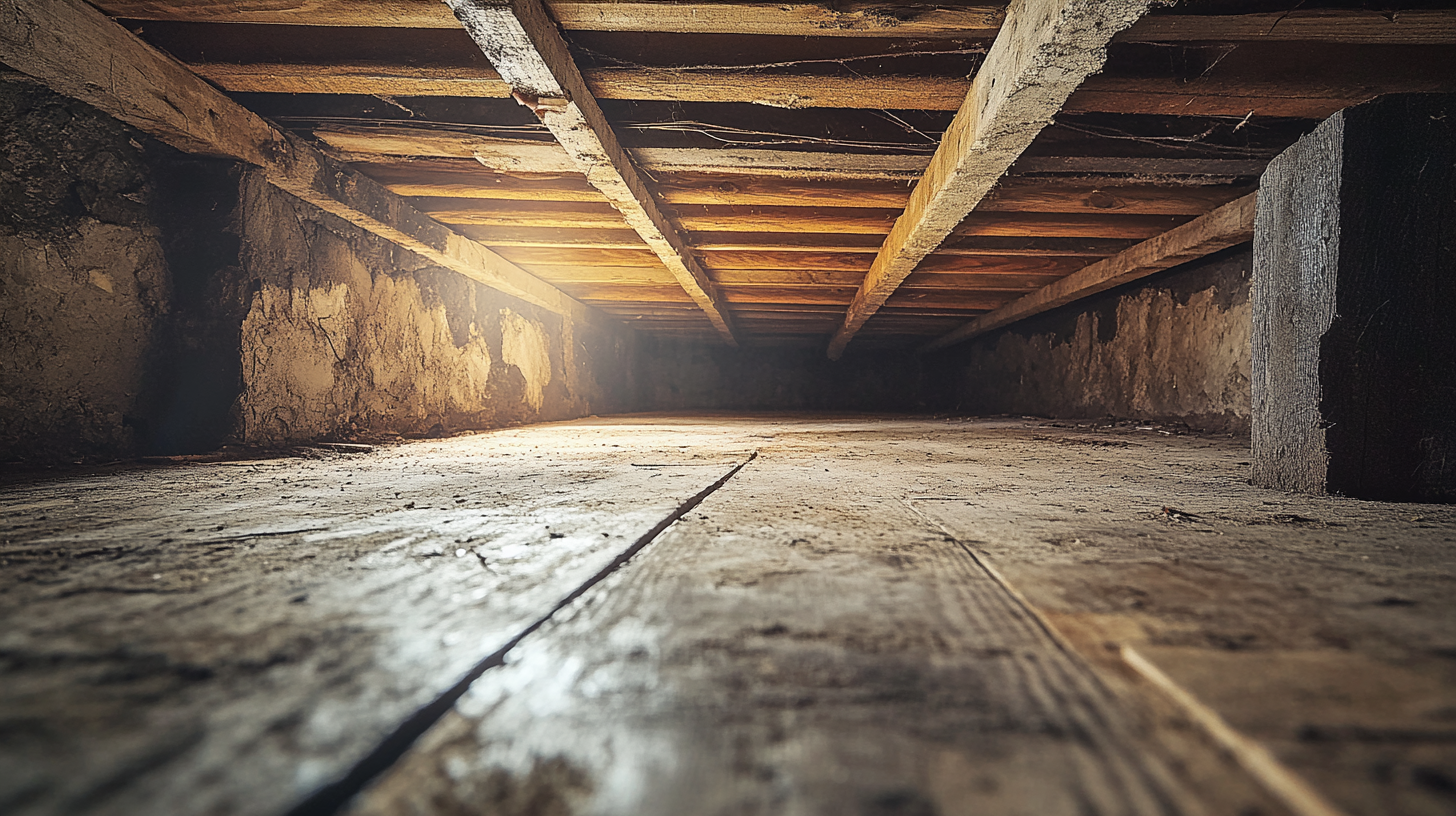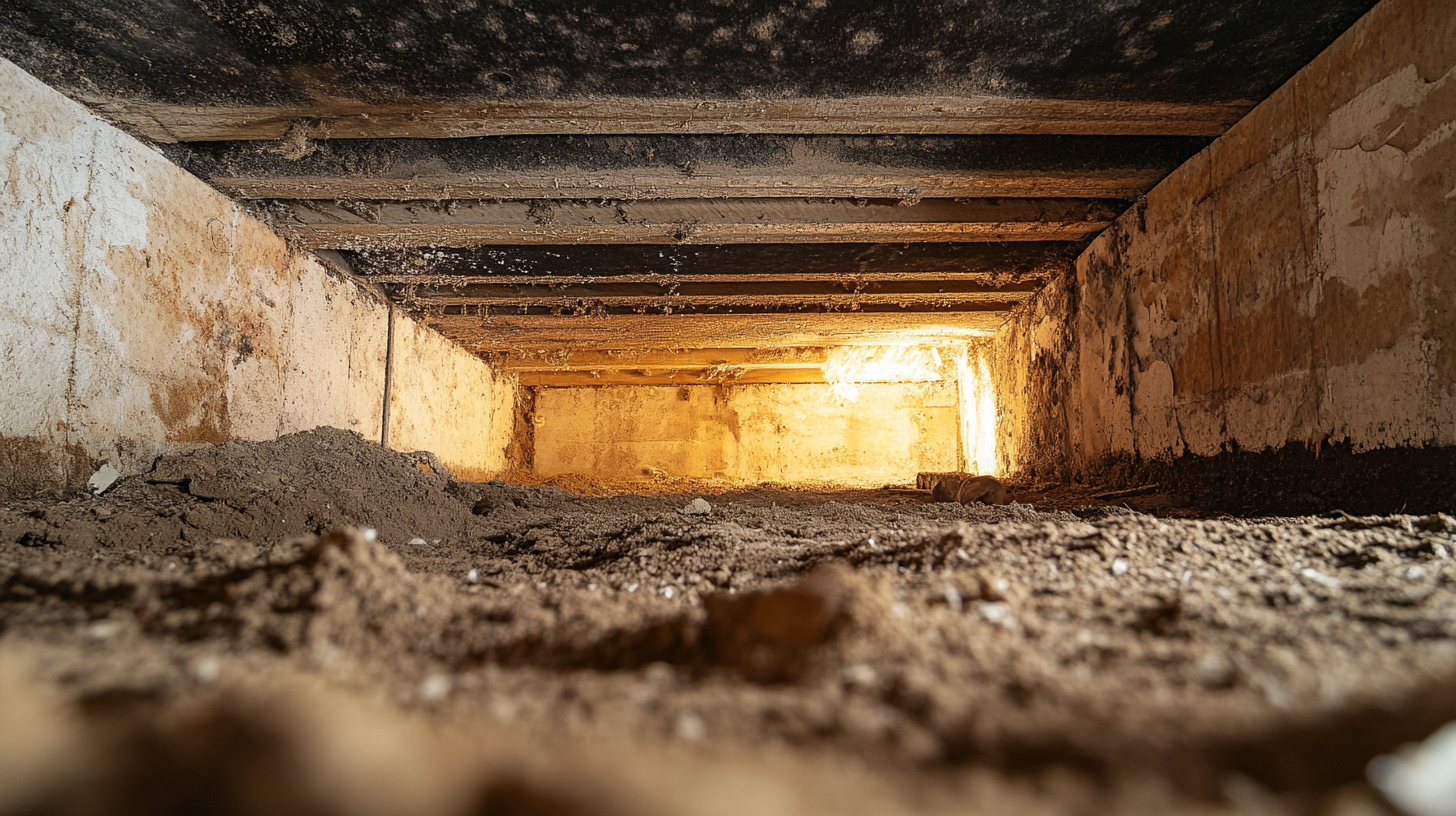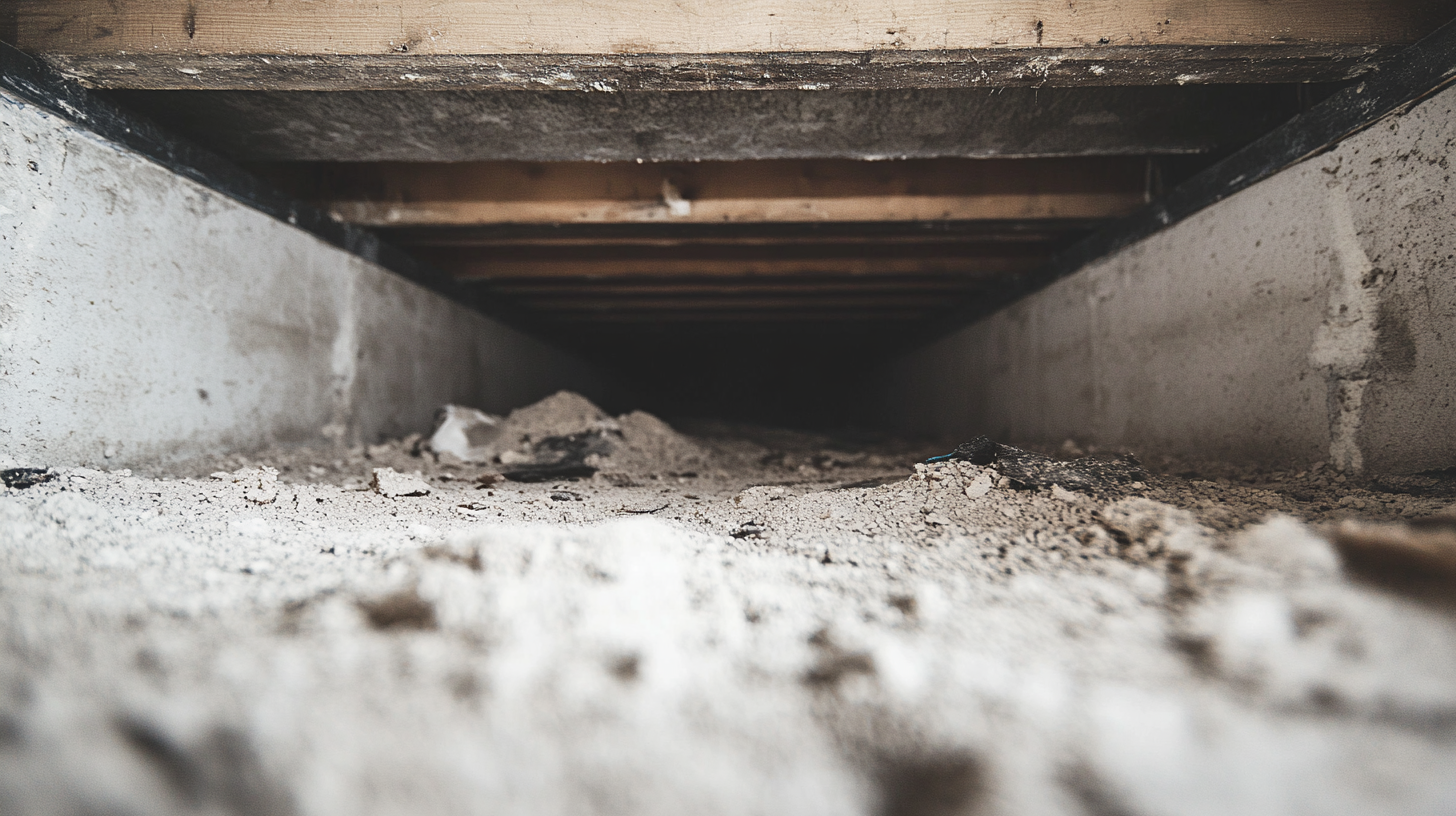Smoke Damage in Historical Buildings

When the past is engulfed in the present's misfortunes, the remnants of history face a silent yet formidable adversary: smoke damage. Historical buildings, repositories of our collective heritage and culture, are particularly vulnerable to the devastating effects of smoke. The intricate architecture and age-old materials that give these structures their timeless allure also present unique challenges when exposed to the corrosive and pervasive nature of smoke.
In this blog, we delve into the complex world of smoke damage as it pertains to historical buildings. Smoke, a seemingly ephemeral aftermath of fire, can insidiously weave its way into the very fabric of these ancient edifices. Its impact goes beyond surface-level discoloration, seeping into porous materials, tarnishing metals, and embedding odors into the centuries-old wood and textiles. The result is not just a visual blemish but a potential compromise to the structural integrity and historical authenticity of these irreplaceable landmarks.
The restoration of smoke-damaged historical buildings is not merely a task of cleaning and repair; it is an act of preservation, demanding a nuanced understanding of both the damage and the delicate nature of the materials affected. Specialized restoration techniques, developed and refined by experts, are crucial in this endeavor. These methods must balance the thorough removal of smoke residues and odors with the imperative to maintain the building's historical integrity. Every stroke of the restorer's hand, every choice of cleaning agent, and every applied technique is a step towards reclaiming history from the clutches of time and misfortune.
Join us as we explore the unique challenges posed by smoke damage in historical buildings and the vital role of specialized restoration techniques in preserving the legacy embedded in their walls. This journey is not just about restoration; it's about respecting and safeguarding our shared heritage for future generations.
Understanding Smoke Damage in Historical Contexts
In this insightful section, we delve into the nuanced and complex nature of smoke damage, particularly as it pertains to historical structures. Our focus is to provide a comprehensive understanding of how smoke impacts these venerable buildings, highlighting the unique challenges faced in preserving their integrity and heritage.
The Impact of Smoke on Historical Structures
Introduction: Begin by setting the context for the reader, explaining the significance of historical structures and the inherent vulnerability they have to smoke damage. This introduction should underscore the importance of understanding smoke's impact on these buildings.
Discussion on Material Impact: Elaborate on how smoke affects different materials commonly found in historical buildings, such as:
- Wood and Timber: Discuss how smoke can penetrate wood, causing discoloration and weakening its structure.
- Stone and Masonry: Explain the absorption of soot and smoke particles into porous stone, leading to staining and potential chemical reactions.
- Metals and Artworks: Cover how smoke can tarnish and corrode metal fixtures and significantly damage paintings and other artworks.
- Visual Aids: Use photographs or diagrams to illustrate the impact of smoke on these materials, providing a clearer understanding for the reader.
Challenges Unique to Historical Buildings
Introduction to Challenges: Introduce the specific challenges faced in dealing with smoke damage in older structures. This should set the stage for a detailed exploration of these unique difficulties.
Specific Challenges: Discuss the various challenges, including:
- Preservation of Originality: Highlight the importance of maintaining the authenticity and original materials of historical buildings while cleaning and restoring them.
- Limited Replacement Materials: Address the difficulty in finding suitable replacement materials that match the original ones in age and style.
- Sensitivity to Chemicals: Discuss how older materials may be more sensitive to modern cleaning chemicals and techniques, requiring careful selection and application.
- Regulatory and Conservation Restrictions: Explain the legal and conservation-related restrictions that often apply to historical buildings, impacting the restoration process.
Expert Insights: Include insights from restoration experts who specialize in historical buildings. This could be in the form of quotes, case studies, or interviews, adding depth and authority to the content.
Assessing Smoke Damage in Historical Buildings
In this essential section, we address the critical process of assessing smoke damage in historical buildings. Our aim is to provide a detailed, expert-informed guide that not only outlines the steps involved in such an assessment but also emphasizes the delicate balance between restoration and preservation in these culturally significant structures.
Conducting a Thorough Assessment
Introduction: Begin with an overview of why a thorough assessment of smoke damage in historical buildings is crucial. This introduction should set the stage for the detailed steps and considerations that follow.
Steps and Considerations: Outline a comprehensive process for assessing smoke damage, including:
- Initial Inspection: Describe the initial walkthrough to visually assess the extent of smoke damage.
- Material Analysis: Emphasize the importance of identifying the types of materials affected and understanding their historical significance and vulnerability to smoke.
- Structural Assessment: Discuss the need to evaluate the structural integrity of the building post-damage.
- Historical Research: Highlight the importance of researching the building's history to understand original materials and construction techniques.
- Documentation: Stress the need for detailed documentation of all findings for restoration planning and historical records.
- Expert Collaboration: Suggest involving experts in historical architecture and restoration during the assessment to ensure accuracy and sensitivity to the building's historical value.
Balancing Restoration and Preservation
Importance of Preserving Original Materials and Features:
Emphasize that preserving the original materials and features is crucial in maintaining the historical integrity and authenticity of the building.
Strategies for Balancing Restoration Needs with Historical Preservation:
- Conservation-First Approach: Advocate for a restoration approach that prioritizes conservation, using methods that are least invasive and most sympathetic to the original materials.
- Use of Compatible Materials: Discuss the importance of using materials and restoration techniques that are compatible with the historical aspects of the building.
- Modern Technology in Restoration: Highlight how modern technology can aid in restoration without compromising historical authenticity, such as using non-invasive cleaning techniques.
- Collaboration with Historians and Conservators: Recommend a collaborative approach involving historians, conservators, and restoration experts to ensure a balance between restoring damage and preserving history.
- Adherence to Preservation Standards: Mention the importance of adhering to local and international standards for historical preservation during the restoration process.
Cleaning and Restoration Techniques
This section of our blog focuses on the specialized techniques required for cleaning and restoring historical buildings that have suffered smoke damage. Our goal is to provide a detailed, expert-informed guide that not only outlines effective methods for soot and residue removal and odor elimination but also emphasizes the importance of preserving the historical integrity of these culturally significant structures.
Soot and Residue Removal
Specialized Techniques for Removing Soot and Residue:
- Gentle Cleaning Methods: Discuss the use of gentle, non-abrasive methods for cleaning delicate materials, such as soft brushes and vacuum suction.
- Chemical Sponges: Explain how chemical sponges can be used dry to lift soot from surfaces without water, which can be beneficial for sensitive materials.
- pH-Neutral Cleaners: Highlight the importance of using pH-neutral cleaners that are less likely to react with aged materials.
Considerations for Preserving Historical Integrity During Cleaning:
- Minimal Intervention: Stress the principle of minimal intervention, where the goal is to do as little as possible while achieving necessary cleaning.
- Testing on Small Areas: Advocate for testing cleaning methods on small, inconspicuous areas first to ensure they do not cause damage.
- Expert Consultation: Suggest consulting with conservation experts to choose the most appropriate cleaning methods for specific materials and situations.
- H3: Odor Elimination in Historical Settings
Approaches to Removing Smoke Odor While Protecting Historical Materials:
- Activated Charcoal and Zeolites: Describe how these natural odor absorbers can be used to capture smoke odors without introducing chemicals into the environment.
- Thermal Fogging: Discuss how thermal fogging can neutralize odors, but caution that it must be used carefully in historical settings to avoid damage.
- HEPA Air Filtration: Explain the use of HEPA air filtration systems to remove particulate matter from the air, which can help reduce odors.
- Controlled Ozone Generation: Cover the controlled use of ozone generators, noting that while effective at breaking down odor molecules, they must be used with caution due to their potential to harm sensitive materials.
- Ventilation and Air Circulation: Emphasize the importance of proper ventilation and air circulation in reducing odors and aiding in the drying process.
The Role of Conservation Experts
In this insightful section, we explore the crucial role of conservation professionals in the restoration of historical buildings, particularly those affected by smoke damage. Our aim is to provide a clear understanding of when and why their expertise is indispensable and how their collaboration with historians and conservators can significantly enhance restoration outcomes.
When to Involve Conservation Professionals
Guidelines on When and Why to Involve Conservation Experts:
- Early Assessment Stage: Emphasize the importance of involving conservation professionals early in the assessment stage to accurately evaluate the extent of damage and the materials affected.
- Developing a Restoration Plan: Discuss how their expertise is crucial in developing a restoration plan that balances the need for damage repair with the preservation of historical integrity.
- Specialized Restoration Tasks: Highlight situations where specialized restoration tasks are required, such as dealing with rare materials or intricate architectural features.
- Compliance with Preservation Standards: Explain their role in ensuring that the restoration process complies with local and international standards for historical preservation.
Collaborating with Historians and Conservators
The Importance of a Multidisciplinary Approach:
- Comprehensive Understanding: Point out that a multidisciplinary team offers a more comprehensive understanding of both the historical significance and the technical aspects of restoration.
- Diverse Expertise: Mention how different experts bring diverse skills and knowledge, leading to more informed decisions and innovative solutions.
How Collaboration Can Lead to More Effective Restoration Outcomes:
- Synergy of Skills: Describe how the synergy between conservation experts, historians, and conservators can lead to more effective problem-solving and restoration techniques.
- Authentic Restoration: Discuss how collaboration helps in achieving an authentic restoration that respects the original design and materials of the historical building.
- Educational Value: Highlight the educational aspect of such collaborations, where different professionals can learn from each other, enhancing their respective fields.
- Community Involvement: Mention the potential for involving the community or local historians, which can add valuable insights and foster a sense of ownership and pride in the restoration project.
Navigating Legal and Regulatory Frameworks
n this crucial section, we address the complexities of legal and regulatory frameworks that play a significant role in the restoration of historical buildings, especially those affected by smoke damage. Our objective is to provide a clear, comprehensive guide to navigating these frameworks, emphasizing the importance of compliance with preservation laws and effective collaboration with government and preservation bodies.
Compliance with Preservation Laws
Introduction to Legal and Regulatory Considerations:
- Begin with an overview of why understanding and complying with preservation laws is essential in the restoration of historical buildings. This introduction should set the stage for the detailed legal and regulatory considerations that follow.
- Overview of Preservation Laws: Provide a general overview of common legal frameworks and preservation laws that govern the restoration of historical structures, highlighting their purpose in protecting cultural heritage.
- Impact on Restoration Projects: Discuss how these laws impact restoration decisions, including the types of materials and methods that can be used.
Working with Government and Preservation Bodies
Navigating the Permissions and Approvals Process:
- Understanding the Process: Outline the typical process for obtaining permissions and approvals, including where to start and what documentation is required.
- Local vs National Regulations: Explain the differences between local and national preservation regulations and how they might impact the restoration process.
- Tips for a Smooth Process: Offer practical tips for navigating the process more efficiently, such as early engagement with authorities and thorough preparation of documentation.
Resources and Support Available from Government and Historical Preservation Organizations:
- Government Resources: Highlight the types of resources and support that can be obtained from government bodies, such as grants, technical guidance, and tax incentives.
- Preservation Organizations: Discuss the role of historical preservation organizations in providing expertise, resources, and advocacy support.
- Case Studies and Examples: Include case studies or examples where collaboration with these bodies led to successful restoration outcomes.
- Networking and Community Involvement: Emphasize the importance of networking with preservation communities and involving local stakeholders for additional support and insights.
FAQs
Contact Fast Response Cleaning & Restoration Today!
Fast Response Cleaning & Restoration will do everything we can to ensure your experience with us is excellent.
Request A FREE Estimate
Request A FREE Estimate Form
CHECKOUT RECENT POST



Have an Emergency? We're Here to Help!
When it comes to disaster cleanup, we are a seasoned veteran in the industry and have helped hundreds of property owners just like you.
Our disaster recovery teams are available 24-7 to quickly clean up and repair disasters of all types.
